Mokume Gane, Japanese Unique Wedding bands and Engagement rings


- 949-629-8174(USA) 81-90-9625-2928(Others)
- english@mokumeganeya.com
Display at the Sendai store
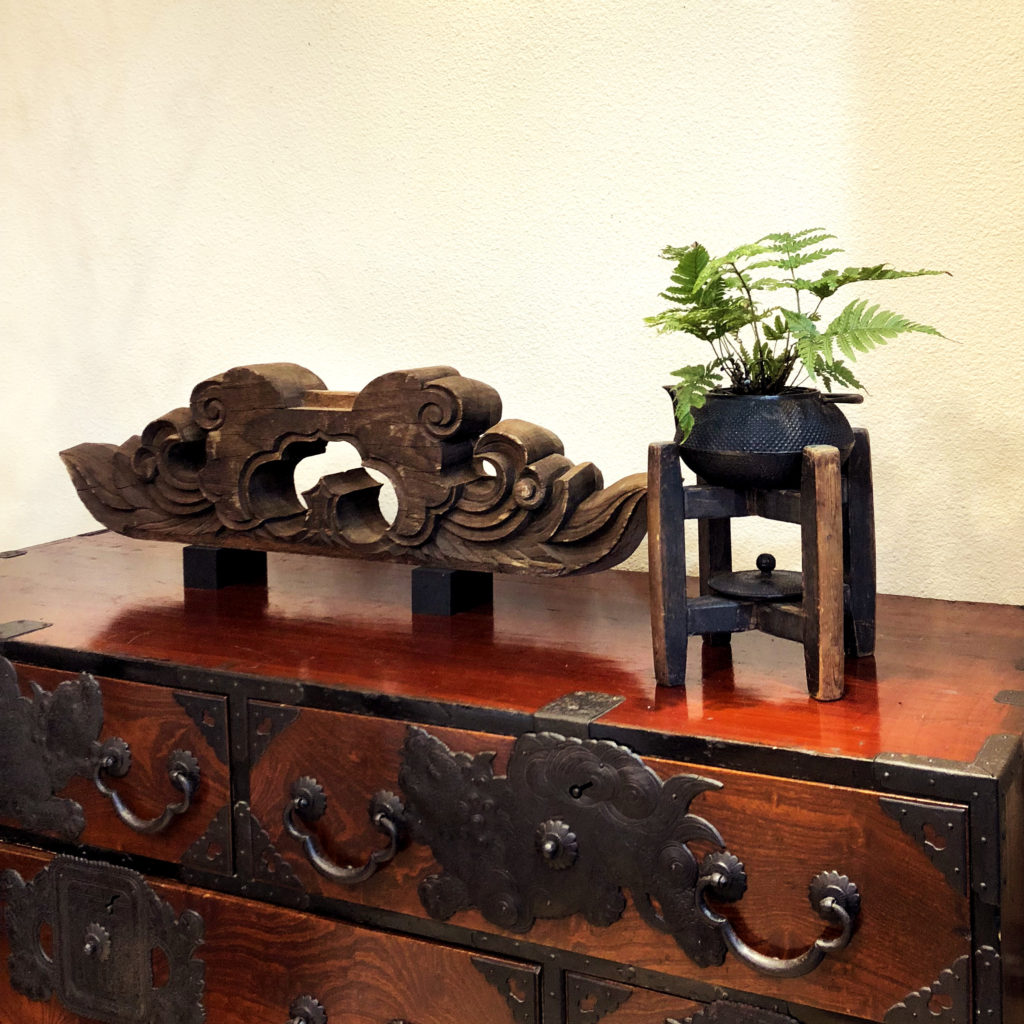
<Display at the Sendai store>
This is an old material displayed at the Sendai store. This is called “Oniita” displayed on the edge of the eaves to pray for the peace of the building.
“Oniita” is a wooden decoration that is attached to both ends of the roof as a substitute for the gargoyle.
The beautiful lotus pattern expresses prayers to God.
We believe that it is very important to convey Japanese traditional culture to the world.
Please take a look at the interiors when you visit the store.
Handle of the Small Sword
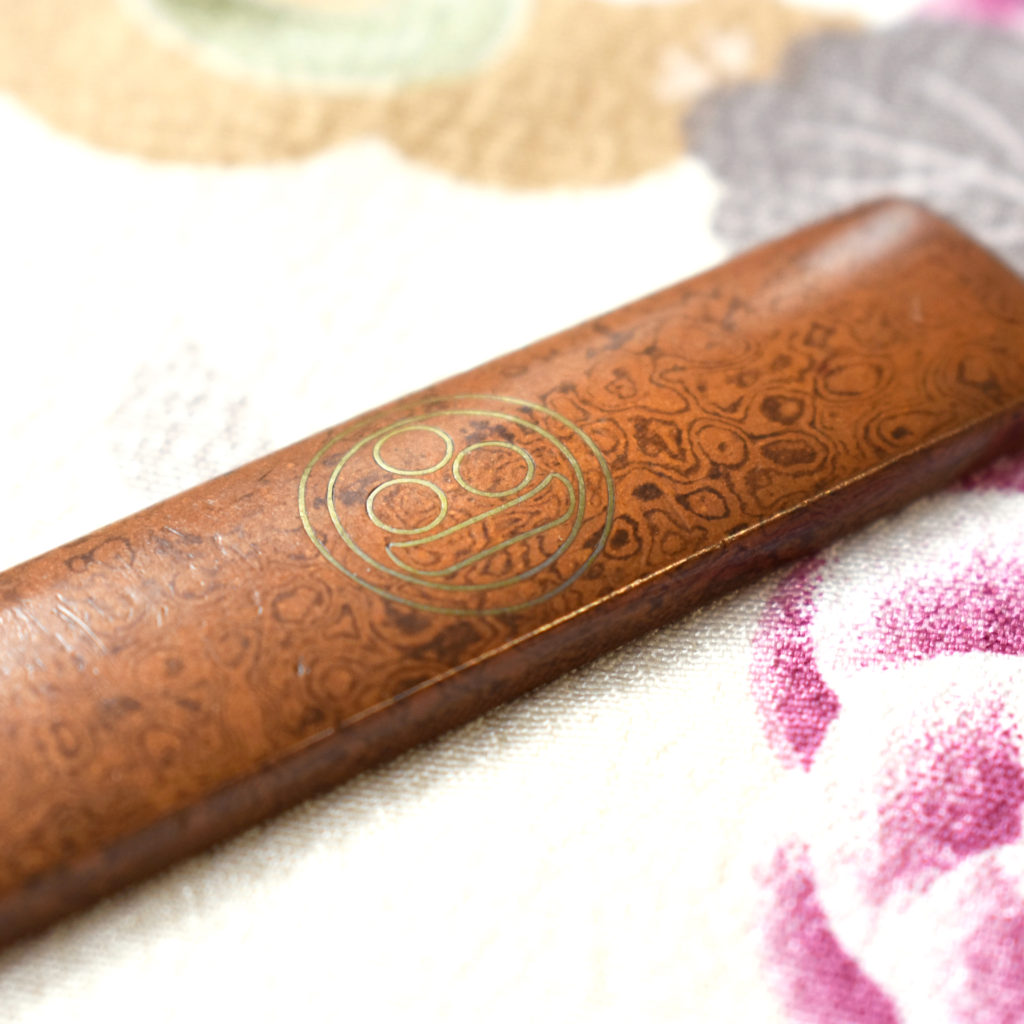
<Handle of the Small Sword>
This is a handle of the small sword made in the late Edo period.
The decoration is called “family crest scattering.” A family crest was inlaid with a gold wire on the Mokumegane ground.
The monograms in an overseas brand are actually originated from the family crest scattering in Japan.
It is a design loved in the world now and in the past.
The three circles on this family crest indicates three stars. In Japan in the Edo period, Chinese constellations were used, and family crests were made based on the constellations.
Tsuba with Rabbits
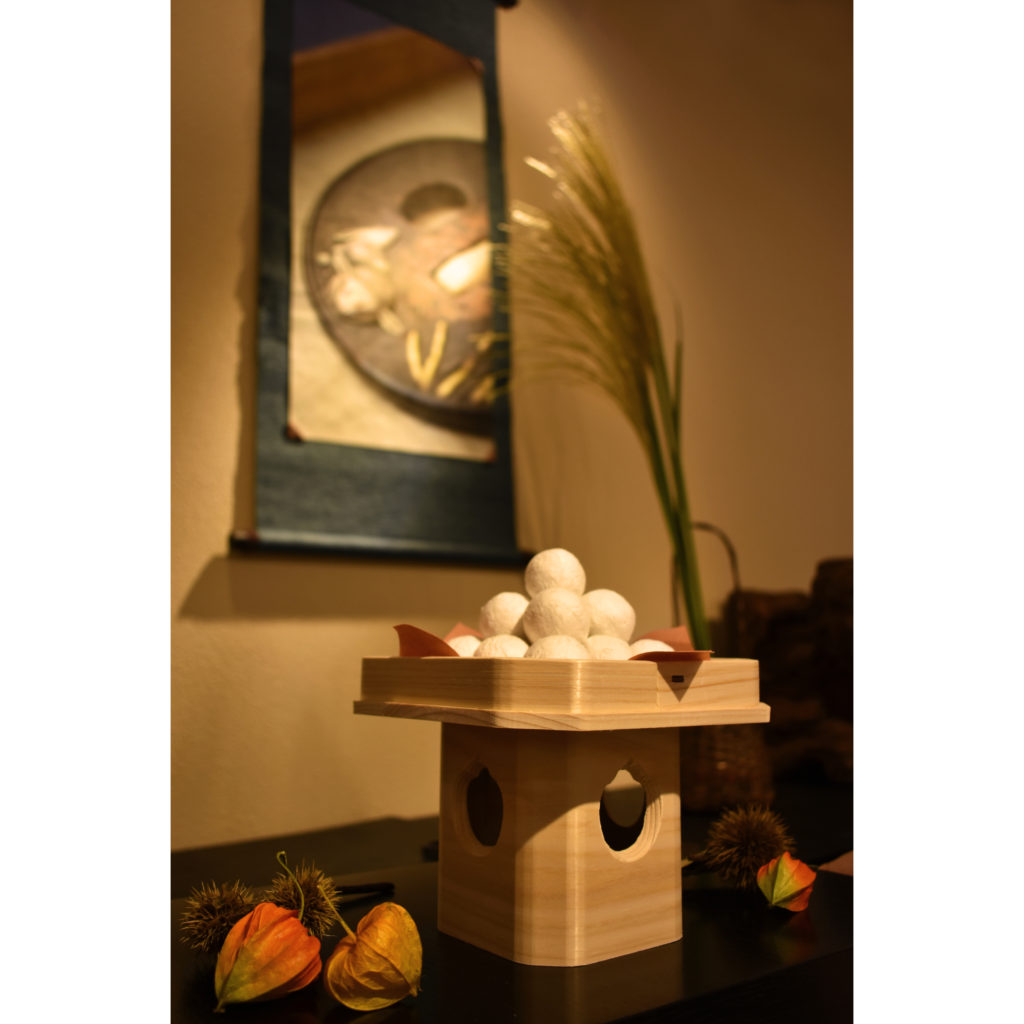
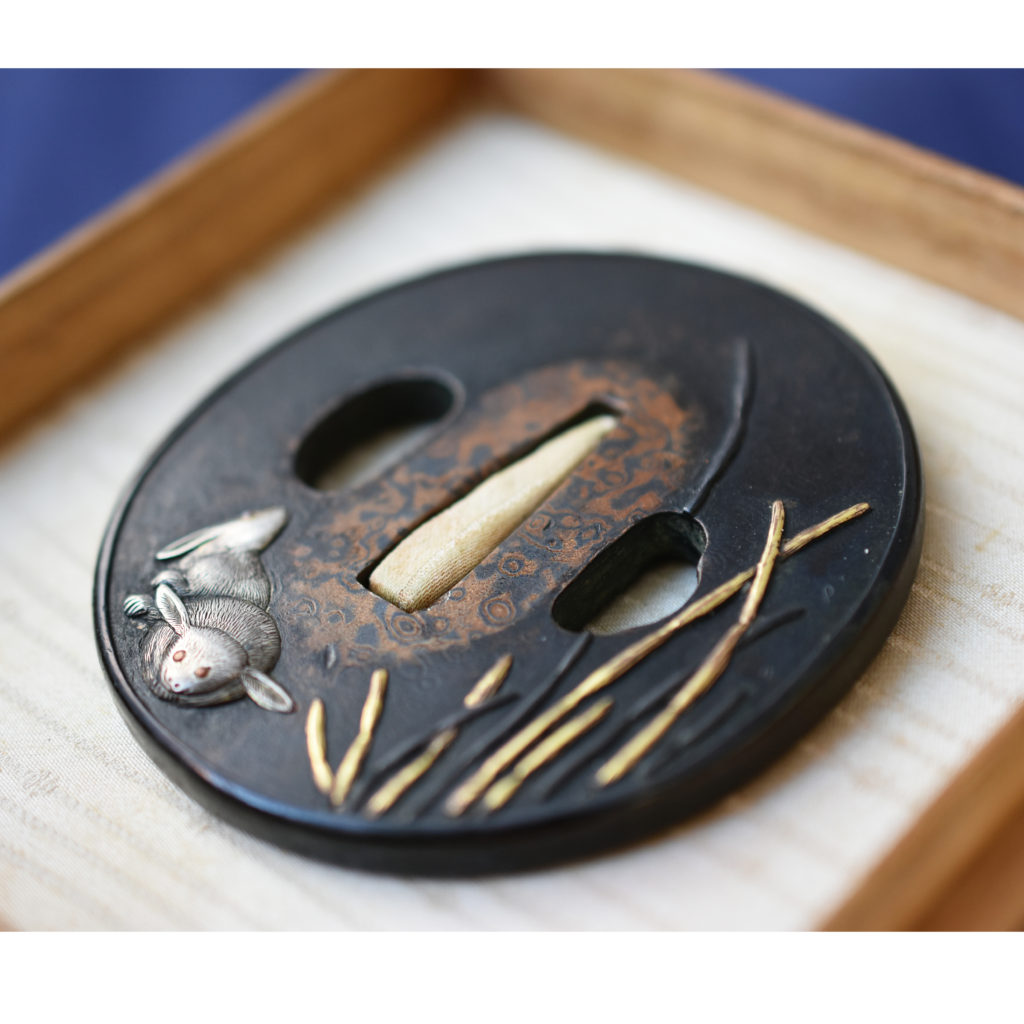
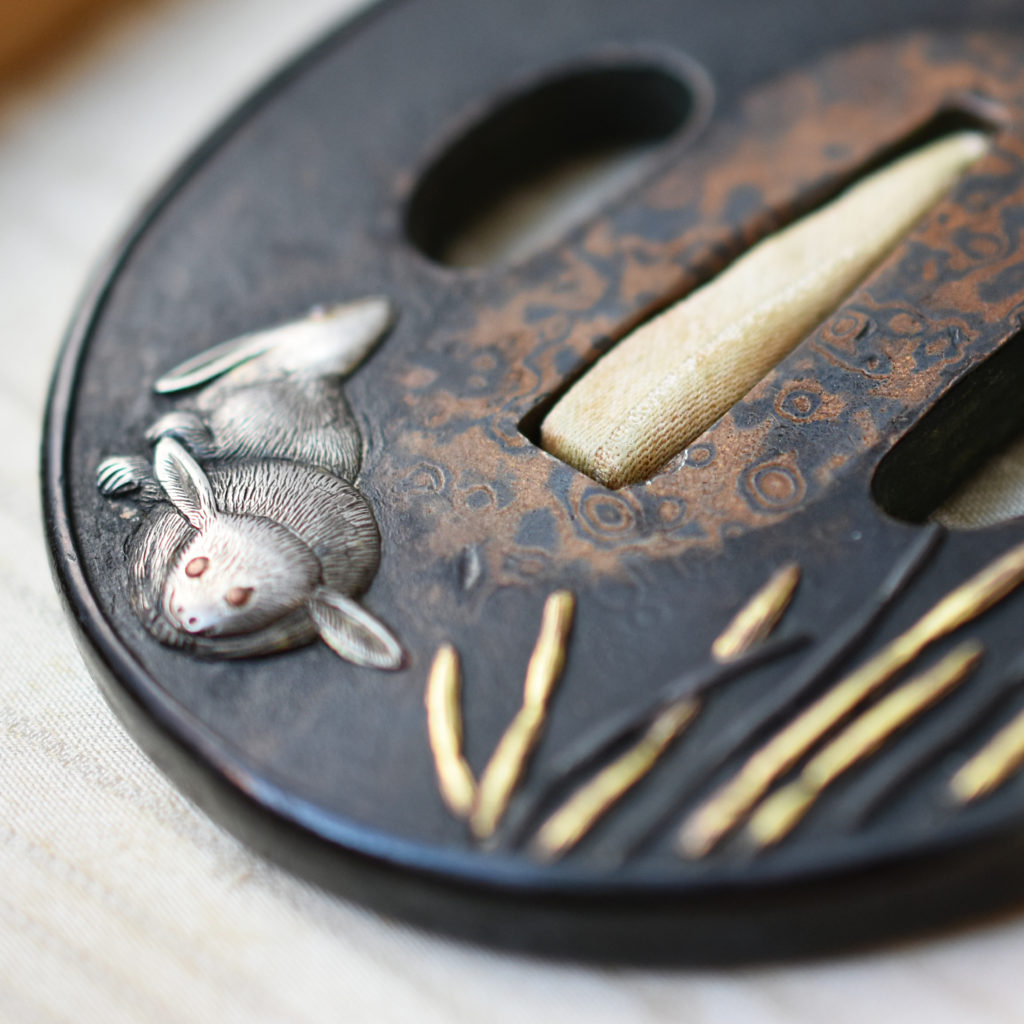
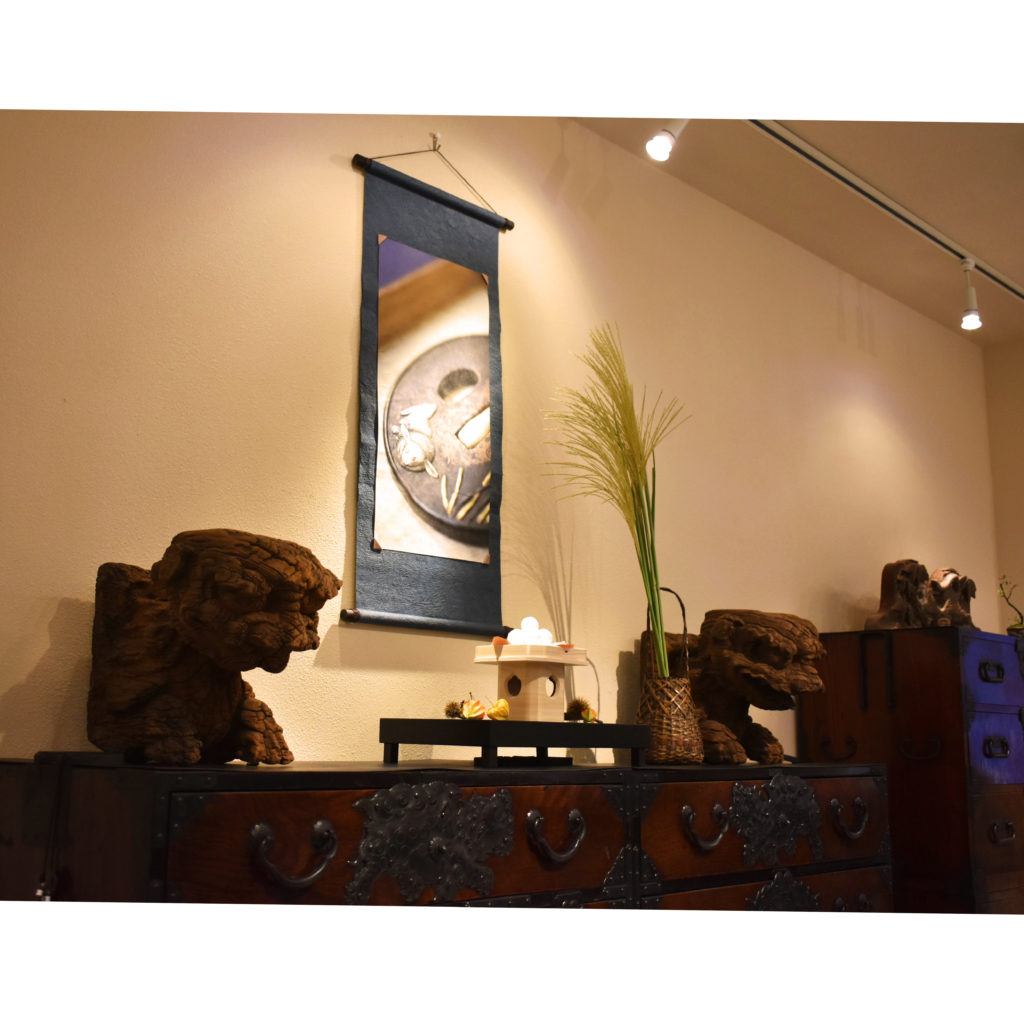
<Tsuba with Rabbits>
Japanese pampas grass and two adorable rabbits are inlaid to the Tsuba made out with Mokume Gane.
One of the rabbits is looking upon the sky, as if it’s looking for their friends who living at the moon.
In Japan, people believe that the pattern of the moon resembles to a shape of rabbit that pounds steamed rice to make rice cake.
This is because “the rabbit and rice” symbolizes the harvest festival in Japan.
The design of the artwork is very peaceful, and it conveys the theme of harvest festival in autumn.
Since we believe that it is very important to convey Japanese traditional culture to the world, Mokumeganeya will introduce you the Japanese antiques and artworks made with Mokume Gane.
72 micro-season calendar
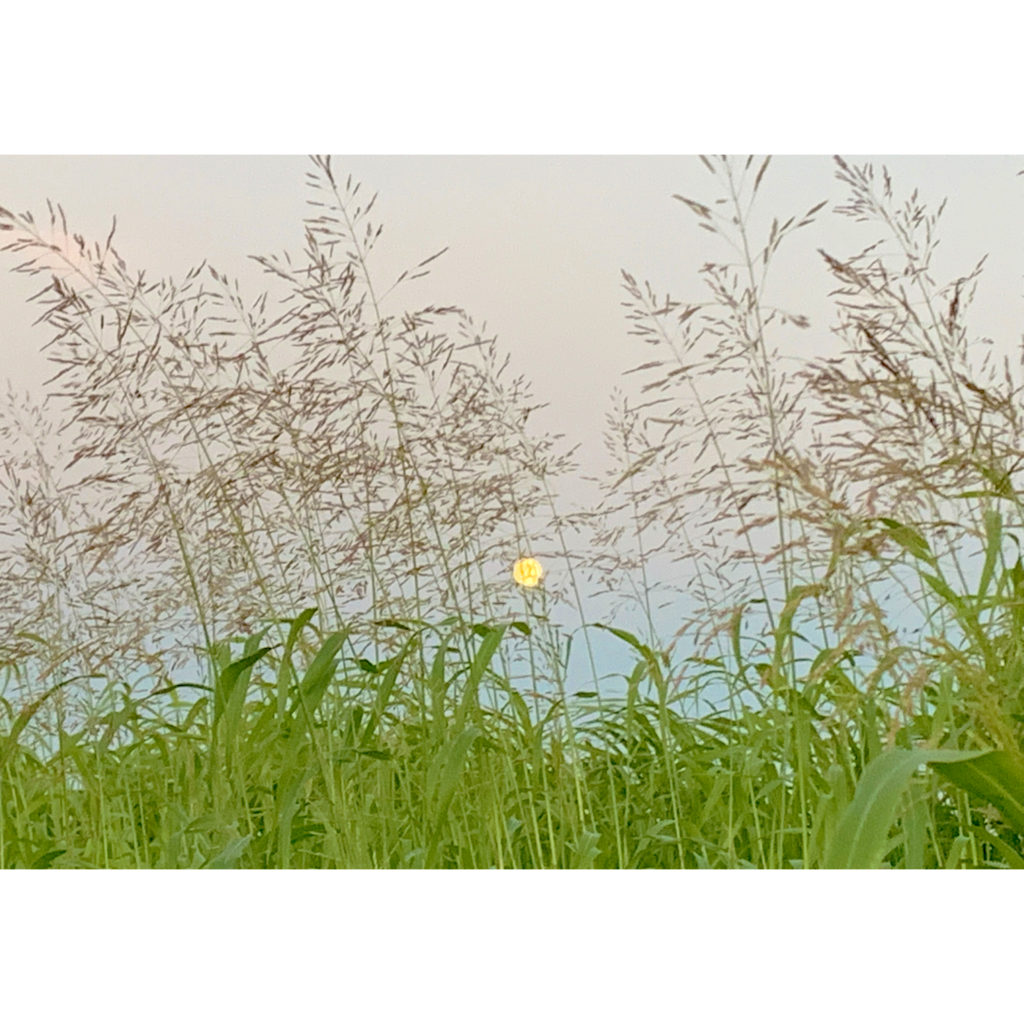
<72 micro-season calendar>
In ancient Japan, people used 72 micro-season calendar (72 Ko) which was made by dividing 12 seasons into 24 sub-seasons, and then splitting into three to give a total of 72 Ko, each lasting for about five days.
The calendar here marks the seasonal cycle of the natural world by allocating a series of evocative names to the different stages of the year, to illustrate the ever-changing beautiful landscape in Japan.
The 72Ko on September 3rd is the 42th Ko “Rice grows and ripens”.
It seems that fall has begun. Take good care of yourself when the seasons change.
To cherish each moment in the changing seasons, Mokumeganeya will introduce you the beautiful flowers and events in each season.
Please enjoy the change of season with us.
Mokumegane Cigarette Case
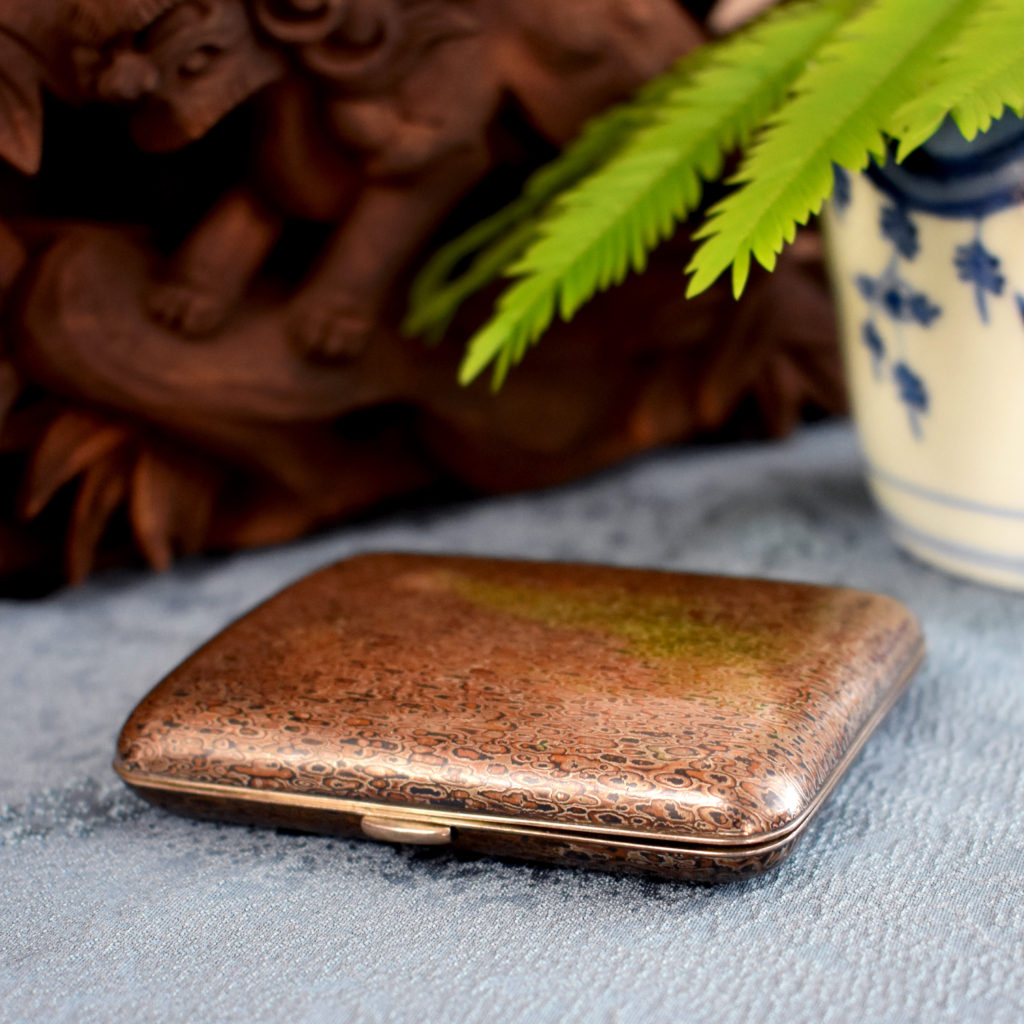
<Mokumegane Cigarette Case>
This is a cigarette case with beautiful delicate Mokumegane made in the Meiji period. It was not only used for just putting tobacco, but it was also used for enjoying as a part of fashion. Did the gentlemen of the Meiji period treasure it as a stylish belonging? It is a valuable piece that many of metalwork in the Edo period were used for.
Mokumegane Sake Cup
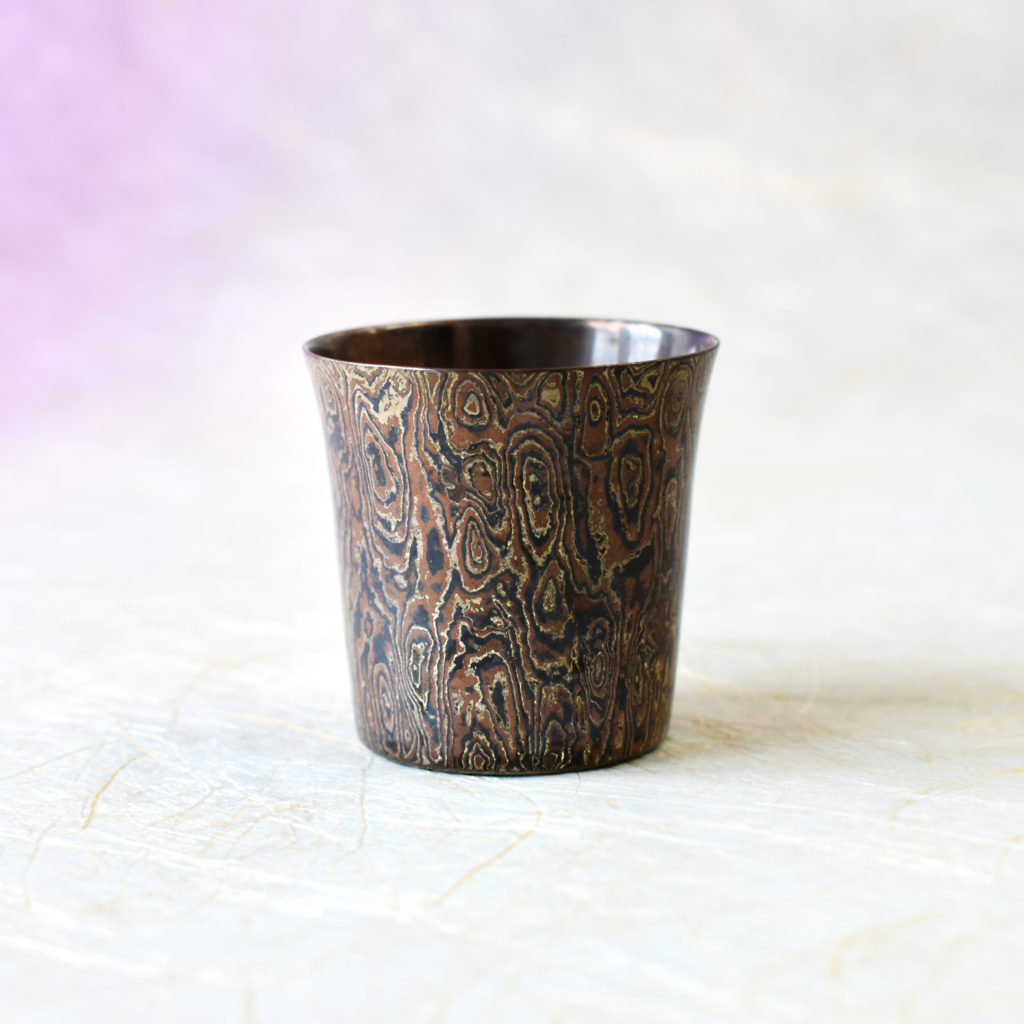
<Mokumegane Sake Cup>
This is a small sake cup with a height of about 4cm, used Mokumegane on all over the front and made of pure silver inside. The cup was made by Masamitsu who succeeded from the late Edo period to the Meiji period. Mokumegane, which was a technique for making samurai swords, was also used for works closely related to the daily life.
Mokumegane Compass


<Mokumegane Compass>
This is a rare barrel-shaped small compass made between the late Edo period and the Meiji period. There is a delicate Mokumegane decoration around the compass less than 1cm. A dragon is drawn on the side with a gold inlay, and it is a luxurious work packed with techniques even in a small piece.
Tsuba made by Matsuyamaju Toshinobu
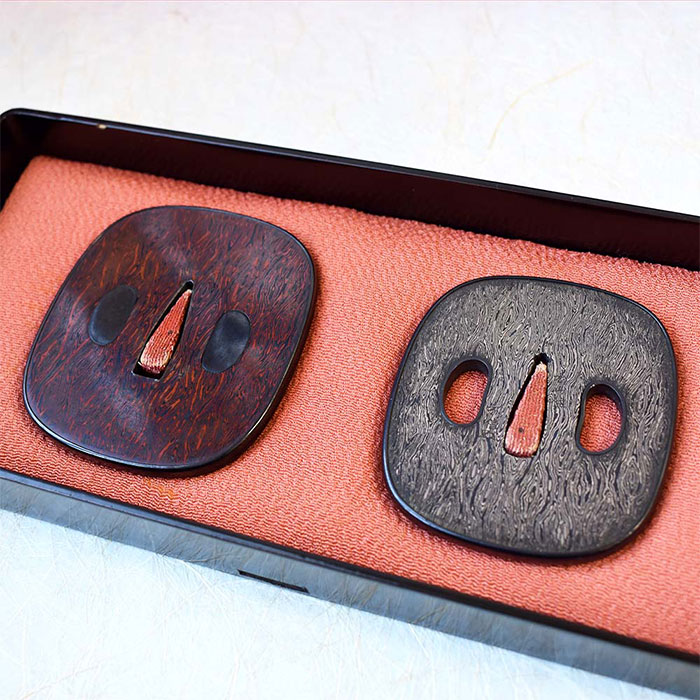
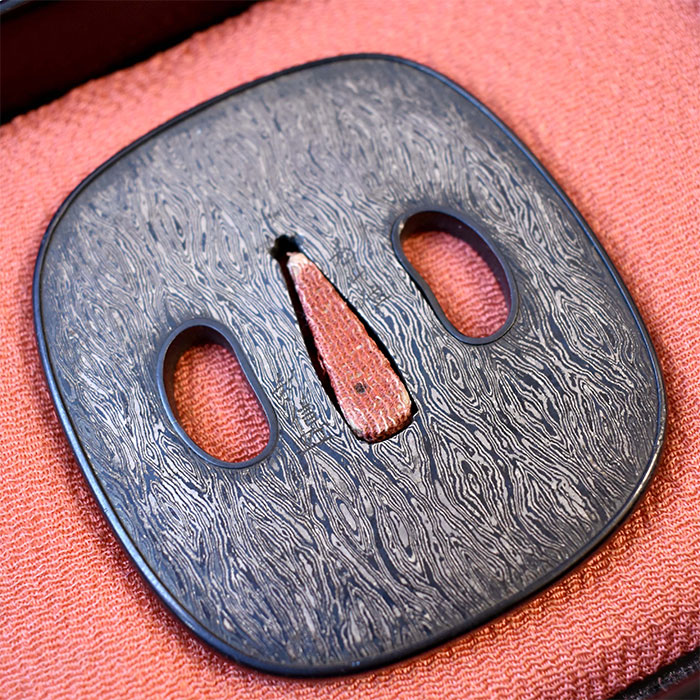
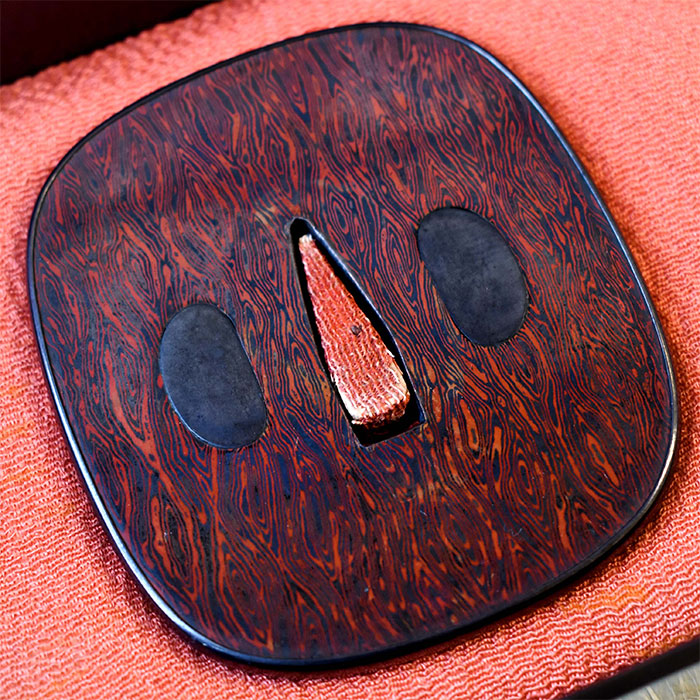
<Tsuba made by Matsuyamaju Toshinobu>
The patterns of the sword guards express the night on the right side and daytime on the left side. They are very valuable because a pair of large and small sword guards are left behind.
As an expression between concrete and impression, “day and night” are often found in the art.
Menuki & Wachigai
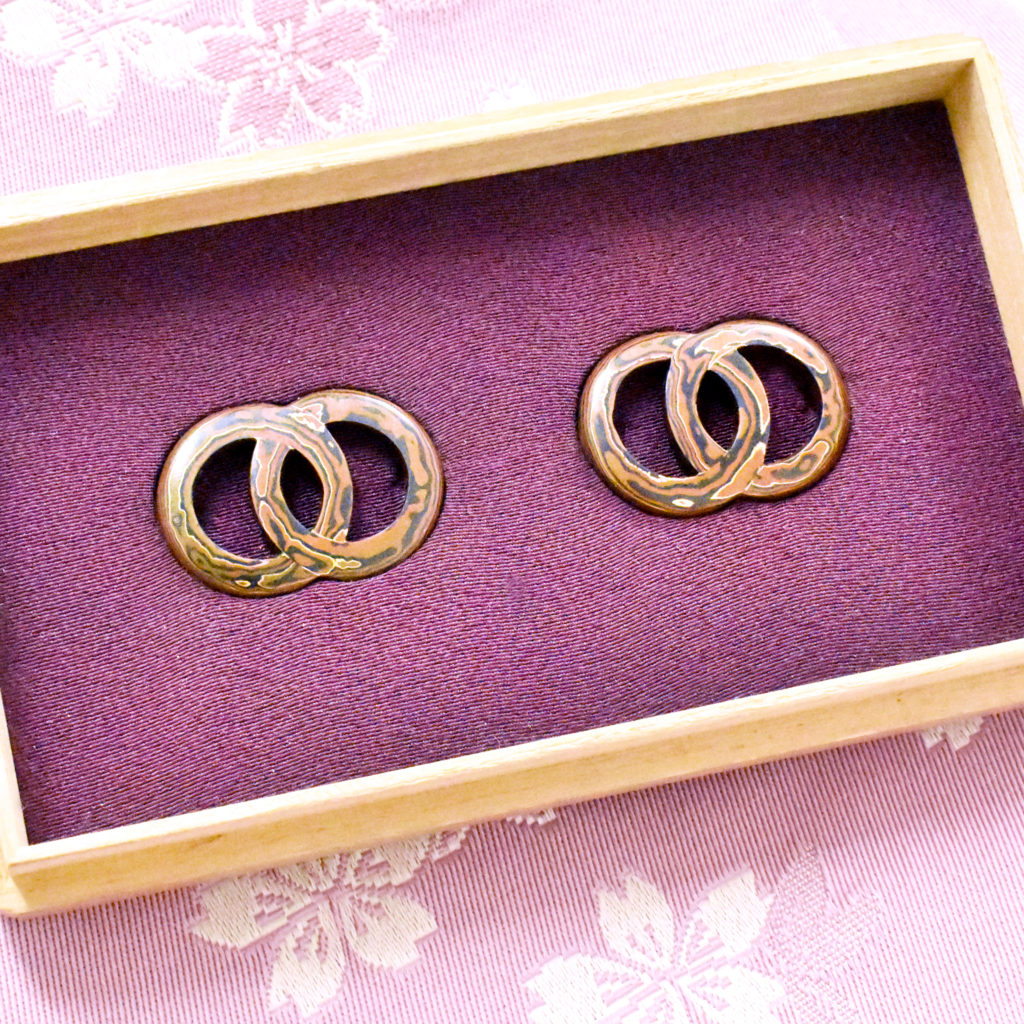
<Menuki & Wachigai>
This is a very unusual item called “Menuki” made at the end of the Edo period.
Menuki is a decorative fitting attached to the handle of a sword.
This shape is called “Wachigai”, a pattern with two or more rings hanging together, that has been used since the Heian period.
The shape formed by the overlapping of the two rings means that two people help each other and live together.
The shape has something to be connected with Mokumeganeya wedding bands, “Tsunagaru-Katachi”.
Mokumegane Yatate
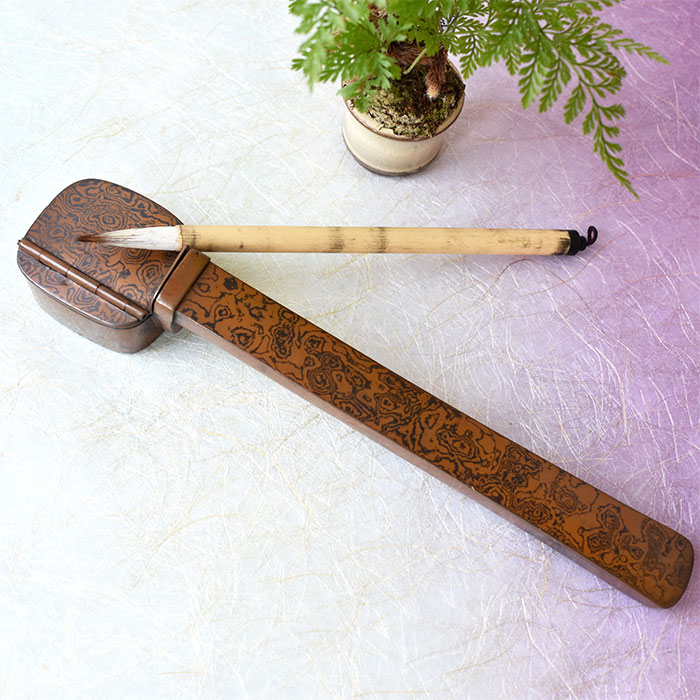
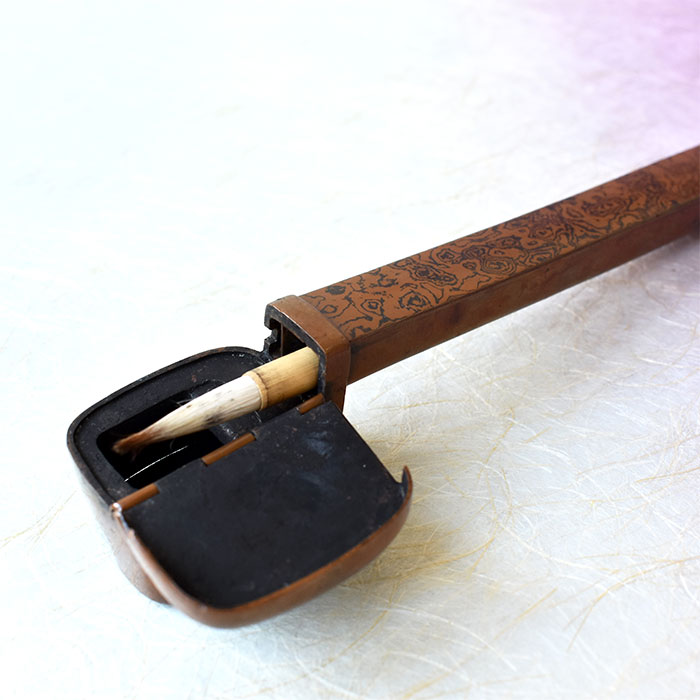
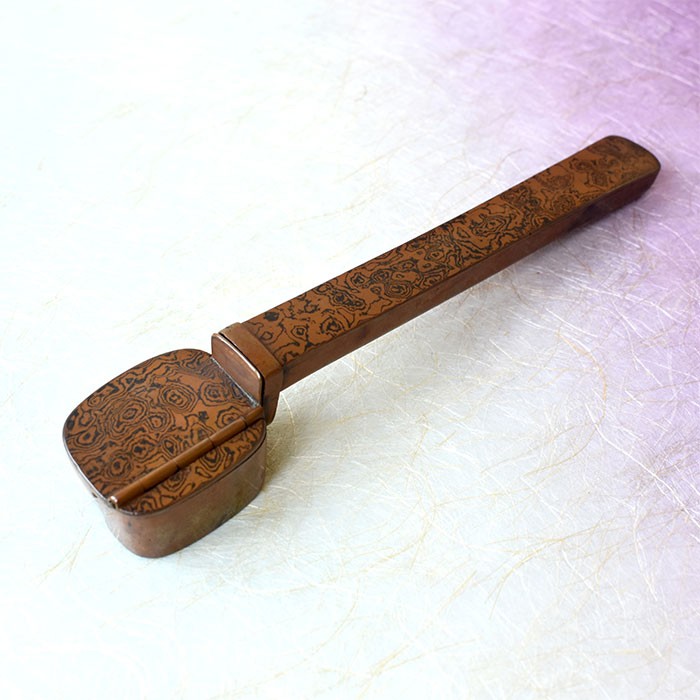
<Mokumegane Yatate>
Yatate is a portable brush-and-ink case.
Samurai in the Kamakura Period started to use it. They walked with it in the belt and enjoyed it as a decoration.
In the end of the Edo period, Mokumegane, which was a decorative technique for swords, was used for daily necessities.


